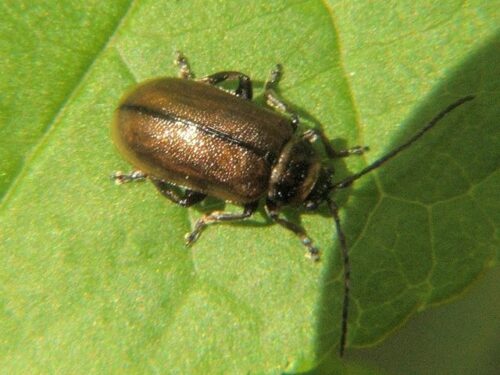The heath beetle belongs to the leaf beetles and is native to north-west Europe. Heather beetles and their larvae feed on heather.
Also known as:
Heather Haantje
Heather beetle (Lochmaea suturalis) belongs to the leaf beetles (Chrysomelidae). The beetle is native to north-west Europe. Heather beetles and their larvae feed on the leaves of heather, both heather (Calluna) and heath (Erica). When the beetles and larvae eat away the heather en masse, it disappears and so do the beetles. Then the heather grows back and the heather beetles also return. The number of beetles is increasing again and the heather that has grown is being eaten away again. This process repeats itself approximately every five to eight years.
The predominantly brown colored beetle is + 6 mm in size, has six legs and two black-red antennae. The larvae are yellow-green. Heath beetles are active from May to November. They overwinter in the topsoil. Heather beetles thrive in the dense shrub layer where humidity is high and the litter layer is protected by the densely growing heather.
Where to find
- Heather:
- Heath
- Shrub heath
Control
The heath beetle can only be to control with insecticides. Since insecticides do not belong in nature reserves, the beetle is tolerated in moorland areas.
Prevention
Keeping a flock of sheep on the heath limits the number of heath beetles. Sheep eat the tops from the heather plants. This creates an open structure in which the heather beetle does not thrive. Burning off and ploughing off are also among the management measures to reduce heath beetle damage.

